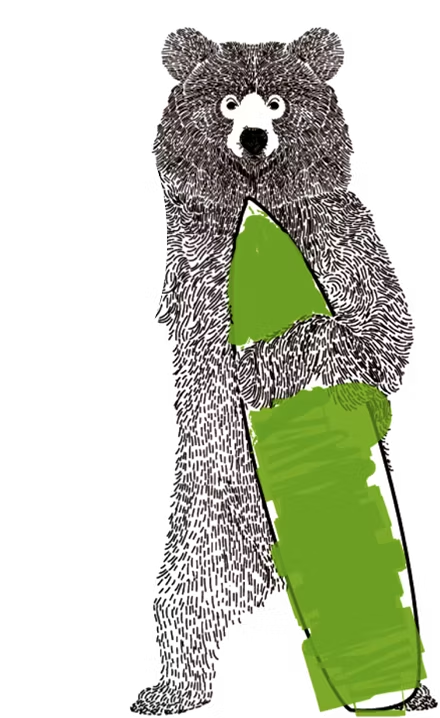The ability to create designs with 3D modeling software can be a huge advantage for any graphic designer. It enables you to create photorealistic illustrations and mockups that are compelling to clients, as well as expand your skill set to craft blueprints for product and environmental designs.
There are many types of of 3D modeling software out there, but we’re going to take you through a list of some of the most popular ones.
1. Sketchup

Sketchup mockup: dot extension
Sketchup is a user-friendly application that’s free to download and great for 3D modeling beginners. More advanced versions cost money, but you can still create great renderings and animations with the free version.
2. Blender

Screenshot: Creating a realistic head in Blender (via Blender Cookie)
Blender is another free 3D modeling application. Features include sculpting, animation, photorealistic rendering and video editing. For those ready to step it up a notch, the software also allows you to craft full 3D games, edit videos and realistic simulations (such as fluid, smoke and hair).
3. AutoCAD
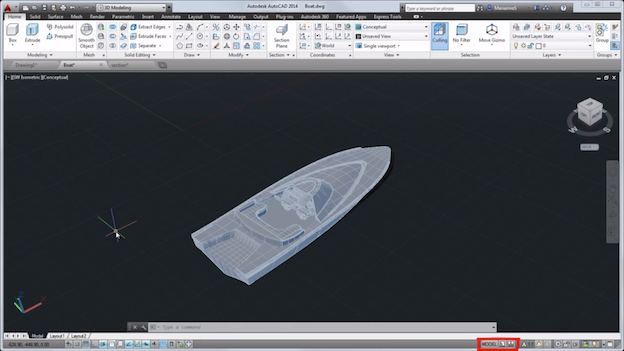
Screenshot: AutoCAD 2014 Tour: Overview of the User Interface
Autodesk’s AutoCAD is one of the most versatile and widely-used 3d modeling applications out there. It’s used by engineers as well as environmental, industrial and graphic designers. As an added bonus, they offer online videos to walk you through the software basics to get you started.
4. Rhino
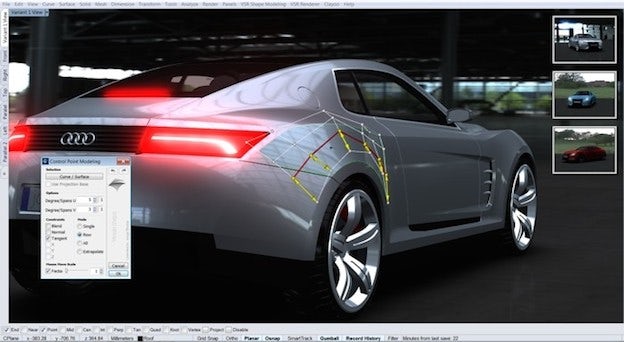
Screenshot: Training car design with Rhino (via icreatia)
Rhino is a curve-based 3D modeling software that creates mathematically-precise models of 3D surfaces. It’s used in architecture, industrial, product, multimedia and graphic design. Rhino offers and entire library of online tutorials, live classes, training guides and more to help you kick things off.
5. Revit

Revit: Design visualization
Autodesk’s Revit specializes in architectural design and structural engineering, specifically Building Information Modeling (BIM). Features take you from free conceptual sketches to sustainable energy analysis, with plenty of collaboration and worksharing capabilities.
6. 3Ds Max
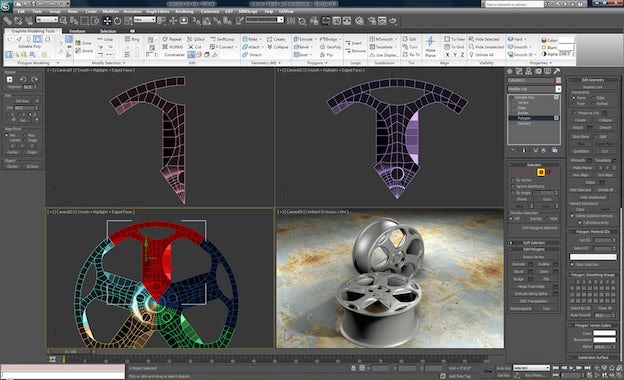
3DS Max: Mesh and surface modeling
3ds Max® by Autodesk is a 3D modeling, animation, simulation and rendering software used in industrial design, film, games and motion graphics. Designers can make their creations come to life with more believable textures, human-like motion, flowing hair and fur, particle simulations and more.
7. Maya
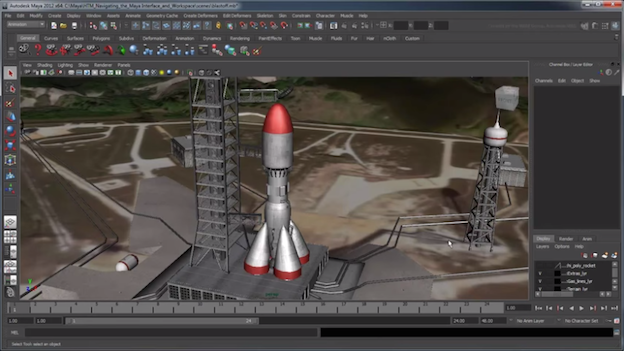
Autodesk Maya: Navigating the Maya Interface and Workspace
Also by Autodesk, Maya 3D is a 3D modeling, animation, rendering and simulation software. Maya 3D very similar to 3ds Max, but less user-friendly for beginners. It’s used in video game development, animated films and visual effects and offers higher-end tools for characters and effects. You can start learning some of the basics here.
8. Cinema 4D

MAXON: Cinema 4D Studio
Developed by MAXON, CINEMA 4D is a 3D modeling, animation and rendering application that is available in “4 Flavors” – motion graphics artists, architects, designers and 3D animators.
It’s widely used in the film industry and helped to create animations in movies like Iron Man and Cloudy with a Chance of Meatballs. You can check out more impressive work made in C4D here.
Conclusion
Many of these applications overlap in terms of their capabilities and can be used in all areas of graphic, environmental and product design. Designs created with 3D modeling software can have many different applications, which is why it’s crucial to ask your clients up front about the intended end-use of the design.
Clients may need 3D designs for anything from presentation and design analysis purposes to production-ready files. During handovers, make sure to upload high resolution PNG and JPG files of the designs and ask them whether they’ll need the 3D source files or any other file formats such as a PSD.
The idea of tackling the learning curve of 3D modeling software can be intimidating, but the potential benefits to any graphic designer’s business can be huge. Similarly to learning the Adobe Suite, knowing the basics of 3D can go a long way. There’s a lot of free software out there, so why not start with one of those and work your way up to the more advanced programs?
Do you use 3D modeling software that wasn’t included in this article? Share it below and tell us why it rocks!
Featured image: 3D renderings created with 3Ds Max. From left: Concept Car by Jomar Machado; Female Anatomy by Sal; The White Shake House by Glorybound (via area.autodesk.com)

